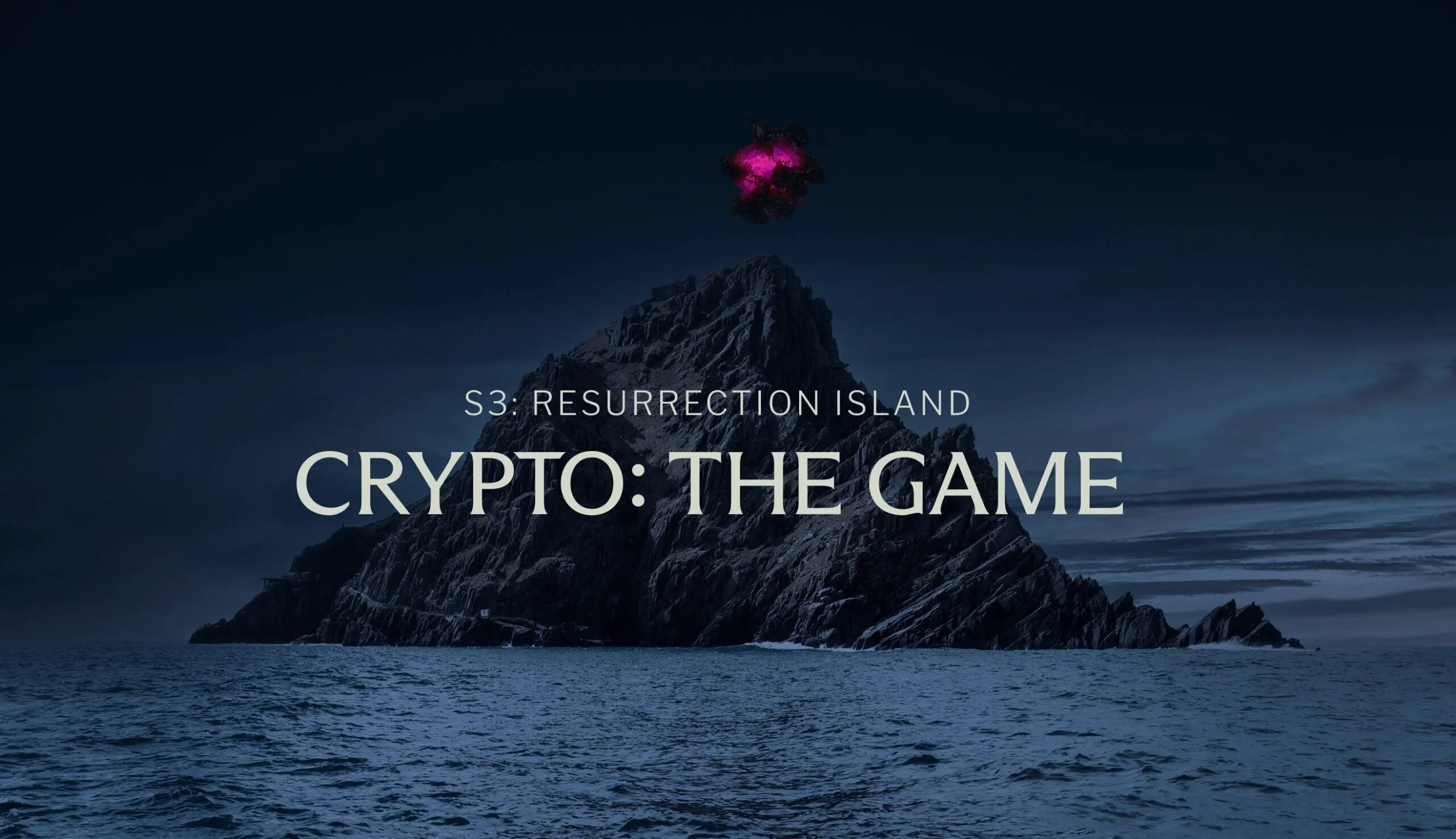Crypto: The Game—the Survivor and Squid Game-style virtual competition that went viral on Crypto Twitter early last year—is returning for its third season with a few twists in tow.
As with seasons past, Crypto: The Game – Resurrection Island will assign players to one of 10 tribes, where they’ll participate in a series of daily elimination challenges. In previous seasons, these challenges have included online games and other tasks, with some real-world elements woven in. Participants are voted out at each stage of the competition until one player is left standing.
However, Season 3 will feature some fresh gameplay mechanics, in addition to new challenges created in collaboration with other Web3 industry heavy hitters.
You will lose sleep
You will be betrayed
You will be deceivedBut Resurrection is coming to the island
Entries for Season 3 go live March 6thpic.twitter.com/XEPOMoNXxw
— Crypto: The Game (@cryptothegame_) February 19, 2025
For starters, CTG players who are ousted from the competition can now earn their way back into the game through high-stakes, on-chain challenges. The season's name alludes to this, and Resurrection Island gives players one shot to complete "classic arcade games, digital scavenger hunts, and crypto puzzles" to get back in, founder Dylan Abruscato told Decrypt.
He likened the model to the "Last Chance Kitchen" competition around hit reality cooking series, "Top Chef." Players can also still buy an NFT access pass via secondary marketplaces to get their way back in after elimination, in a bit of a shortcut.
Meanwhile, social media protocol Farcaster will host a custom challenge during this season, much like Lens did in Season 2 of CTG, while a companion podcast will be hosted by crypto culture collective Boys Club.
Finally, the victor of Crypto: The Game Season 3 will claim the full prize pool, or as much as 80 Ethereum (ETH), worth about $180,000 as of the time of writing. In Season 2, the game’s organizers took 10% of the prize pool, or 8 ETH. But this time around, the entire share will go to the winner.
The size of the prize will, as in years past, be determined by the number of game tickets sold. A total of 800 tickets will be sold via Uniswap’s own Unichain—an Ethereum layer-2 network—as NFTs, priced at 0.1 ETH each—or about $225 worth as of this writing. Tickets go on sale today.
New owners, same core
This season marks the first time the viral game is being hosted under the Uniswap Labs umbrella. The decentralized exchange acquired Crypto: The Game for an undisclosed price, as announced in June.
Crypto: The Game first went viral in early 2024, when 410 players across the globe competed to win a prize pool of $115,000 worth of Ethereum (ETH). Following the success of its first edition, CTG rapidly launched its second season last April, which sold out with 800 players.
This time around, Crypto: The Game – Resurrection Island isn’t making the player pool any bigger, but the additional gameplay elements and tie-in content are designed to make the experience even better and more immersive "both inside and outside the game," Abruscato told Decrypt.
The player pool is being kept the same “mainly for the integrity of the game,” he added.
“It seemed like anything over 80 [players] per tribe could feel like you were randomly picking people, versus actually being able to strategize [and] form alliances.”
Edited by Andrew Hayward

